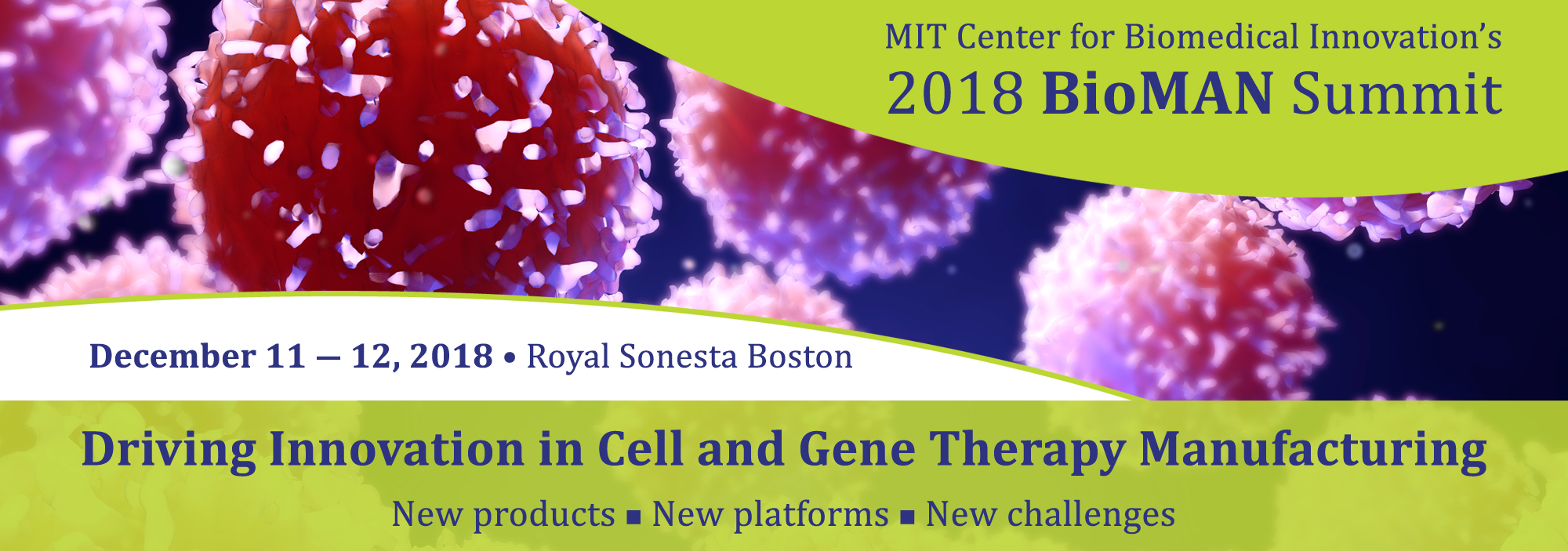
|
 |

|
Daniel G. Anderson view bio | back to agenda
Associate Professor, Chemical Engineering, Institute for Medical Engineering and Science, Division of Health Science and Technology, and the David H. Koch Institute for Integrative Cancer Research, MIT
Combinatorial Development of Materials for Islet Cell Therapy
High-throughput, combinatorial approaches have revolutionized small molecule drug discovery. Here we describe our work on the combinatorial development of biomaterials for the purposes of enabling islet transplantation. The fibrotic reaction to biomaterials is a fundamental challenge to the function of implanted medical devices. Using combinatorial chemistry, we have developed new materials capable of avoiding fibrosis and scar tissue formation. These show particular promise as vehicles for the immune-isolation of transplanted cells, for the treatment of diabetes. When formulated into microcapsules, these materials enable functional, long-term islet transplantation in immune-competent, diabetic rodents, as well as normal non-human primates. |
 |
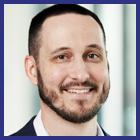
|
Paul W. Barone view bio | back to agenda Day 1 | back to agenda Day 2
Director, Biomanufacturing Program and the Consortium on Adventitious Agent Contamination in Biomanufacturing, MIT CBI
Lessons from the CAACB for Cell and Gene Therapy Products
Adventitious agent contamination of cell culture-based biomanufacturing operations for the production of protein and monoclonal antibody biotherapeutics are infrequent, but when they do occur, they are very costly, impact manufacturing operations, and can potentially impact patient safety and product supply. In response to this need, the CAACB began the confidential collection and analysis of industry-wide viral contamination data with an emphasis on 'lessons learned'. This presentation will cover the learnings from this study, including identified industry risks and best practices to mitigate those risks. Some of the key findings which have significant implications to the emerging cell therapy industry are:
- Raw materials, including non-animal-based raw materials, may be a potential source of viral contamination and stringent raw material testing and vendor selection and auditing programs are critical.
- Traditional viral tests, including in vitro testing and PCR, have contributed to false-positive events, which may take extended times to resolve prior to release of raw materials, process intermediates, or final product.
- The time frames needed for viral testing in general, and for investigation of positive viral tests, can range from weeks to months, and are not compatible with the requirements for near real-time release testing for some cell therapy products.
|
 |
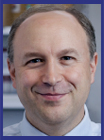
|
Lawrence Bonassar view bio | back to agenda
Daljit S. and Elaine Sarkaria Professor, Meinig School of Biomedical Engineering, Sibley School of Mechanical and Aerospace Engineering, Cornell University
Development and Translation of Engineered Tissues with Mechanical and Compositional Properties for Articular Cartilage and Anterior Cruciate Ligament (ACL) Reconstruction
Patients in the U.S. experience approximately 1.2M cartilage defects annually, with approximately 150,000 microfractures performed in lesions <6 cm2. More than 350,000 ACL reconstruction surgeries are performed each year in the U.S. These patients are at high risk for developing osteoarthritis within a decade after surgery due in part to the lack of mechanically correct tissue repair and reconstruction options. Histogenics has established a platform to translate novel tissue-engineering technologies to the clinic in order to address these unmet patient needs, leveraging its cGMP, Regulatory and Clinical capabilities.
Histogenics developed an autologous tissue-engineered cartilage construct, NeoCart, that is in late-stage (Phase 3) clinical development. Histogenics has collaborated with Cornell University to elucidate the relationship between extracellular matrix and biomechanics. At Cornell, microelastography techniques were combined with Fourier transform infrared microscopy to map the local mechanical properties and composition of NeoCart constructs. Observing changes in local properties and composition with culture time showed that deposition of matrix within the pores of constructs substantially changed the mechanics of developing tissues. At early culture times scaffolds buckled under compression. With time in culture, matrix was deposited in the pores of constructs, preventing buckling and substantially enhancing the mechanical performance of the developing tissue. The combination of microscopy-based mechanical and compositional assessments provide a unique quality control framework to monitor the development of tissue-engineered cartilage. STEL Technologies developed the CGEM™ (cell-generated matrix) graft for ACL reconstruction.
The CGEM™ graft is a devitalized allogeneic tissue-engineered combination tissue consisting of two mineralized bone areas and a non-mineralized ligament area with extracellular matrices (ECMs) produced from differentiated bone marrow-derived mesenchymal stem cells (MSCs) and assembled in a proprietary semi-closed 3D tissue production system. The unique compositional and mechanical properties of the CGEM™ graft allow the patient's body to regrow native ACL tissue to restore normal form and function to an ACL-injured knee and eliminate the donor site pain and disability associated with the commonly used autografts. The CGEM™ is in late-stage preclinical development and STEL looks to translate the technology for human clinical trials by leveraging the Histogenics platform. |
 |
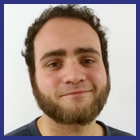
|
Nicholas Brancazio view bio | back to agenda
Microbiology Associate, Fluid-Screen
Real-Time Microbial Detection for Biomanufacturing
Throughout the production of next-generation pharmaceuticals, prevention of microbial contamination is crucial. Standard growth-based detection methods require a minimum 14-day incubation, a period which often exceeds the shelf-life and delays release of cell therapies, gene therapies, and CAR-T treatments.1 To improve patient safety and increase efficiency of drug production, new real-time microbial detection methods are required.
Fluid-Screen aims to enable real-time sterility testing by capturing and identifying microbial contaminants in 30 minutes. This method utilizes dielectrophoresis (DEP) and electroosmosis (EO), electromagnetic phenomena which influence particle motion in fluids. Fluid-Screen has designed a novel electrode configured with a high-volume throughput microfluidic chip which induces electric field gradients to utilize DEP and EO for high efficiency microbial capture. Pilot studies have demonstrated separation of Escherichia coli and Mycoplasma species from mammalian cell culture, label-free microbial viability, and >99% bacterial capture efficiency.
Fluid-Screen presents a microbial capture technology that for the first time is suitable for high-precision sterility testing. Culture-free microbial detection will allow for real-time results, allowing previously un-testable bioproducts for cell and gene therapies to be tested before expiration, thus increasing product yield and patient safety. With faster detection capabilities than current methods, Fluid-Screen demonstrates the potential to establish a 30-minute maximum for microbial detection in biomanufacturing.
1. R.S. Tirumalai, “USP Proposes a New Chapter for Rapid Sterility Testing” BioPharm International 31 (9) 2018. |
 |
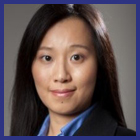
|
Vivian Choi view bio | back to agenda
Director, Head of Gene Therapy Research US, Discovery Therapeutics, US Drug Discovery, Shire
Establish Efficient Approaches to Quantify rAAV Vectors and Build a Robust Path to the Clinic
Product characterization is critical for all drug products. Gene therapy products, being less well-defined than more traditional biologics, pose bigger challenges to drug product characterization. The analysis of research, preclinical, clinical, and commercial gene therapy products used in the course of research and development is critical to the development path of the drug candidate. The analytical assay used to determine drug unit for dose setting is highly important, particularly due to the fact that the human clinical starting dose is often calculated based on effective doses determined in preclinical disease animal model studies and No-Observed-Adverse-Effect-Level (NOAEL) determined in preclinical safety studies. Methods selected to determine the dose unit can greatly influence the planning of the first in human studies and beyond. In this presentation, multiple methods used in the field to determine dose units of rAAV-based gene therapy products will be discussed, comparing and contrasting their pros and cons and how future innovations can influence the selection of dose unit determination method in characterizing viral vector-based gene therapy products. |
 |

|
Warren Davis view bio | back to agenda
Sales Account Manager, Berkeley Lights
Digital Cell Biology At Light Speed
Cell and gene therapies hold great promise in a wide range of diseases including harnessing immune cell function to treat cancer. However, more insights about the function of individual therapeutic immune cells are needed in order to optimize and realize the potential of this novel class of therapies. Innovative tools that enable deep profiling of immune cells could lead to a greater understanding of mechanisms controlling immune cell function and result in more defined and less toxic therapeutic cell doses.
We will present data on the high-throughput, deterministic functional characterization of 1000s of single human primary T cells in 1-2 days with low cell number input requirements. Assays include fluorescent cell surface characterization, IFNc cytokine release upon tumor cell interaction, tumor cell killing, and T cell activation. These capabilities will enable cell and gene therapy manufacturers to perform rapid functional tests within manufacturing processes, enabling rapid iteration to produce the highest fraction of functional T cells. In addition, we believe this may be a novel method for future QC outgoing cell doses, generating data such as the percentage of cells with the correct phenotype and function characteristics desired by a cell therapy manufacturer. |
 |
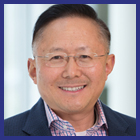
|
Guangping Gao view bio | back to agenda
Co-Director, Li Weibo Institute for Rare Diseases Research, Director, Horae Gene Therapy Center and Viral Vector Core, Professor of Microbiology and Physiological Systems, Penelope Booth Rockwell Professor in Biomedical Research, University of Massachusetts Medical School
Human Gene Therapy – The Road to Today and Beyond
Since the first proof-of-concept human application in the early 90’s, the field of Gene Therapy has now entered a stage of unprecedented revolution for clinical translation and commercialization, particularly for platforms involving viral vector-mediated approaches. Hundreds of clinical trials have since been completed or are currently underway and several gene therapy drugs have been approved and entered the drug market, while a multitude of gene therapy companies worldwide have been established and have gone public in recent years.
Gene therapy can be accomplished through in vivo and ex vivo approaches by gene replacement, for loss-of-function genetic diseases; gene silencing, for gain-of-function genetic disorders; gene editing, for any genetic diseases; and gene addition, for treating acquired diseases. The design and selection of vehicles used to deliver the genetic payload, called vectors, are key elements for successful genetic modulation. Among the current variety of vectors available for in vivo gene therapy, adeno-associated virus (AAV)–based vectors stand out for their high efficiency, stability, and low immunogenicity/toxicity profiles, holding great promise for multiple gene therapy applications. This presentation will review the key principles, history, current challenges, and future directions of human gene therapy, primarily focusing on AAV gene therapy development for treating human diseases by different approaches. |
 |
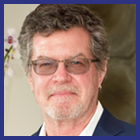
|
Martin Giedlin view bio | back to agenda
Vice President, Technical Operations, Poseida Therapeutics
Discussion on the Use of Non-Viral Cell Gene Modification for the Generation of CAR-Ts
We will present a general overview of our non-viral manufacturing method using the piggyBac DNA Modification System including how the system operates, the benefits including cargo capacity and what that enables, the benefits of early stem cell phenotype, and other experience. I will discuss the benefits of our approach over viral manufacturing techniques based upon prior experience. We can also share a high level summary of clinical data from P-BCMA-101 that will have been presented at ASH the prior week. |
 |

|
Colin Hebert view bio | back to agenda
Vice President, Biotechnology, LumaCyte
Laser Force Cytology for Label-Free Single Cell Analysis and its Applicability in Cell Therapy Biomanufacturing
Precise and predictive analytics are fundamental to any biomanufacturing process, especially those as sophisticated and variable as cell therapies. Thus, there is a need for technologies that interrogate cells in a sensitive and non-invasive manner to develop, optimize, and monitor cell therapy manufacturing processes. LumaCyte’s core technology is Laser Force Cytology (LFC), which enables the rapid characterization and sorting of single cells without the use of antibodies or fluorescent labels. LumaCyte’s Radiance™ instrument uses a combination of advanced optics and microfluidics to analyze cells based upon their intrinsic properties. Radiance™ employs optical force, image capture, and microfluidics to analyze, characterize, and sort cell populations in a fundamentally new way.
LFC is sensitive to agents that perturb cellular structures or change biochemical composition. Functional viral infectivity measurements can be made in a fraction of the time as traditional assays or in near real-time throughout infection. Phenotypic changes including cell differentiation, activation, apoptosis, and cytoskeletal changes can be identified, characterized, and used to separate responsive cell populations. Sensitivity to changes in cellular growth conditions including media have been measured and characterized using Radiance™, demonstrating its broad applicability as a real-time process analytical tool for cell-based R&D and manufacturing. |
 |
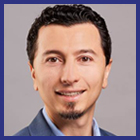
|
Onur Kas view bio | back to agenda
Senior Scientist, Virus and Gene Therapy Bioprocessing, MilliporeSigma
High-Titer Lentivirus Production in Suspension Cell Culture Systems Using Transient Transfection
One of the major bottlenecks in recombinant viral vector manufacturing is scaling up to meet clinical demands. Most clinical stage production processes still rely on adherent cell culture systems and scaling out to generate required amounts of product, which is costly and labor-intensive. For a true scale up, a suspension-adapted cell line capable of producing high virus titers is required. This talk will highlight a lentivirus production platform including a high-producer HEK 293T clone along with an optimized chemically-defined media. |
 |

|
Stephen Kennedy view bio | back to agenda
Executive Vice President and Chief Operating Officer, Histogenics
Development and Translation of Engineered Tissues with Mechanical and Compositional Properties for Articular Cartilage and Anterior Cruciate Ligament (ACL) Reconstruction
Patients in the U.S. experience approximately 1.2M cartilage defects annually, with approximately 150,000 microfractures performed in lesions <6 cm2. More than 350,000 ACL reconstruction surgeries are performed each year in the U.S. These patients are at high risk for developing osteoarthritis within a decade after surgery due in part to the lack of mechanically correct tissue repair and reconstruction options. Histogenics has established a platform to translate novel tissue-engineering technologies to the clinic in order to address these unmet patient needs, leveraging its cGMP, Regulatory and Clinical capabilities.
Histogenics developed an autologous tissue-engineered cartilage construct, NeoCart, that is in late-stage (Phase 3) clinical development. Histogenics has collaborated with Cornell University to elucidate the relationship between extracellular matrix and biomechanics. At Cornell, microelastography techniques were combined with Fourier transform infrared microscopy to map the local mechanical properties and composition of NeoCart constructs. Observing changes in local properties and composition with culture time showed that deposition of matrix within the pores of constructs substantially changed the mechanics of developing tissues. At early culture times scaffolds buckled under compression. With time in culture, matrix was deposited in the pores of constructs, preventing buckling and substantially enhancing the mechanical performance of the developing tissue. The combination of microscopy-based mechanical and compositional assessments provide a unique quality control framework to monitor the development of tissue-engineered cartilage. STEL Technologies developed the CGEM™ (cell-generated matrix) graft for ACL reconstruction.
The CGEM™ graft is a devitalized allogeneic tissue-engineered combination tissue consisting of two mineralized bone areas and a non-mineralized ligament area with extracellular matrices (ECMs) produced from differentiated bone marrow-derived mesenchymal stem cells (MSCs) and assembled in a proprietary semi-closed 3D tissue production system. The unique compositional and mechanical properties of the CGEM™ graft allow the patient's body to regrow native ACL tissue to restore normal form and function to an ACL-injured knee and eliminate the donor site pain and disability associated with the commonly used autografts. The CGEM™ is in late-stage preclinical development and STEL looks to translate the technology for human clinical trials by leveraging the Histogenics platform. |
 |
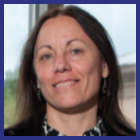
|
Lisa M. Larkin view bio | back to agenda
Chief Executive Officer & Founder, STEL Technologies; Professor, Molecular & Integrative Physiology and Biomedical Engineering, University of Michigan
Development and Translation of Engineered Tissues with Mechanical and Compositional Properties for Articular Cartilage and Anterior Cruciate Ligament (ACL) Reconstruction
Patients in the U.S. experience approximately 1.2M cartilage defects annually, with approximately 150,000 microfractures performed in lesions <6 cm2. More than 350,000 ACL reconstruction surgeries are performed each year in the U.S. These patients are at high risk for developing osteoarthritis within a decade after surgery due in part to the lack of mechanically correct tissue repair and reconstruction options. Histogenics has established a platform to translate novel tissue-engineering technologies to the clinic in order to address these unmet patient needs, leveraging its cGMP, Regulatory and Clinical capabilities.
Histogenics developed an autologous tissue-engineered cartilage construct, NeoCart, that is in late-stage (Phase 3) clinical development. Histogenics has collaborated with Cornell University to elucidate the relationship between extracellular matrix and biomechanics. At Cornell, microelastography techniques were combined with Fourier transform infrared microscopy to map the local mechanical properties and composition of NeoCart constructs. Observing changes in local properties and composition with culture time showed that deposition of matrix within the pores of constructs substantially changed the mechanics of developing tissues. At early culture times scaffolds buckled under compression. With time in culture, matrix was deposited in the pores of constructs, preventing buckling and substantially enhancing the mechanical performance of the developing tissue. The combination of microscopy-based mechanical and compositional assessments provide a unique quality control framework to monitor the development of tissue-engineered cartilage. STEL Technologies developed the CGEM™ (cell-generated matrix) graft for ACL reconstruction.
The CGEM™ graft is a devitalized allogeneic tissue-engineered combination tissue consisting of two mineralized bone areas and a non-mineralized ligament area with extracellular matrices (ECMs) produced from differentiated bone marrow-derived mesenchymal stem cells (MSCs) and assembled in a proprietary semi-closed 3D tissue production system. The unique compositional and mechanical properties of the CGEM™ graft allow the patient's body to regrow native ACL tissue to restore normal form and function to an ACL-injured knee and eliminate the donor site pain and disability associated with the commonly used autografts. The CGEM™ is in late-stage preclinical development and STEL looks to translate the technology for human clinical trials by leveraging the Histogenics platform. |
 |
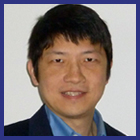
|
Harry Lee view bio | back to agenda
Co-Founder and President, Pharyx
Technologies for High-Quality Manufacturing of Autologous Cell Therapies
High-quality production of cell therapies requires integration of sensor technologies with automated control over the cell micro-environment. Here, we discuss two technologies for realizing this level of sensing, control, and automation. The feed/dilution rate during cell expansion arises from the balance between over-dilution of paracrine factors which influence cell fate and functionality, while not allowing the accumulation of metabolic by-products, such as lactate or ammonia, which can impair cell growth. Today, the feed/dilution rates are scheduled based on prior experience. However, the consumption and production rates of nutrients and metabolites are highly variable, depending on the cell source. The advent of new tools that allow for monitoring cell proliferation and viability along with nutrient and metabolite concentration (for example by Raman spectroscopy) allow for the rates for feeding and dilution to be conditioned on real-time measurement. Perfusion microbioreactors are personalized cell culture systems capable of transducing and expanding single dose quantities of autologous cell therapies. They incorporate online monitoring and control over culture parameters such as pH, dissolved oxygen, and temperature. Currently, the feed composition and perfusion rate may be conditioned on these culture parameters, however the incorporation of online metabolite analysis will allow for direct closed loop control over the cell micro-environment. The compact size and closed system operation of perfusion microbioreactor systems enable efficient automation and integration with QC analysis instruments such as flow cytometers and digital PCR systems, where clusters of microbioreactors may share common automation and analysis resources. This offers the promise of in-process measurement of Critical Quality Attributes for high-quality, scaled-out manufacturing of autologous cell therapies. |
 |

|
Philip Lee view bio | back to agenda
Co-Founder and Chief Operating Officer, Senti Biosciences
Advancing Genetic Circuit Technologies for Next Generation Cell and Gene Therapies
An expanding synthetic biology toolkit is enabling more rapid design and build of novel cell and gene therapy candidates. We are engineering cells expressing genetic circuits with increasingly sophisticated properties that will improve efficacy and safety, and address a broader range of therapeutic areas. As genetic circuit therapies progress towards the clinic, it is important to develop appropriate manufacturing capabilities to meet the needs of these products. |
 |

|
Bruce Levine view bio | back to agenda
Barbara and Edward Netter Professor in Cancer Gene Therapy, Founding Director of the Clinical Cell and Vaccine Production Facility, Department of Pathology and Laboratory Medicine and the Abramson Cancer Center, Perelman School of Medicine, University of Pennsylvania
Engineering Intelligent Immunity: The Development and Future of CAR T Cell Therapies
Since the 1990’s, we have conducted clinical trials of gene modified T cells. Chimeric antigen receptor (CAR) T cells targeting CD19 on B cells leukemias and lymphomas have induced durable complete responses in patients who are relapsed or refractory to all other available treatments. This synthetic biology technology has now undergone global multi-center clinical trials and recently received FDA approval (Kymriah™, Novartis) in relapsed/refractory acute lymphoid leukemia in children and young adults. CAR T cells targeting new targets in hematologic malignancies and in solid tumors are underway and provide demonstration that it is possible to design immunity at will for therapeutic application. The road forward for wide patient access to these uniquely personal cellular therapies depends not only on scientific and engineering advances, but also on meeting medical infrastructure and health policy challenges. |
 |

|
Harshyaa Makhija view bio | back to agenda
Research Fellow, Nanyang Technological University, Singapore-MIT Alliance for Research and Technology
λ-Integrase-Mediated Genome Insertion Tool—A Novel and Unique Platform for Genome Engineering
Precise and safe genetic engineering is central to the development of innovative cellular products. This becomes extremely challenging for applications that require insertion of large DNA payloads (> 6-8kb) into the genome of the cells. Current practices including random (viral-based) and specific (endonuclease-based) tools are suboptimal in delivering large transgenes and also pose safety concerns. Compromise in genome integrity, off-target effects, and genotoxicity are some of the associated serious drawbacks that should be addressed either by refinement of current tools or searching for a non-viral alternative for the benefit of biomedical and translational research.
We have developed a novel non-viral technological advance based on λ-integrase that can precisely insert multi-transgene cassettes in the form of seamless vectors (>10Kb) at known loci of the human genome with appreciable efficiency, minimal safety concerns and has been validated in a spectrum of cell lines. Moreover, it does not introduce DNA double-strand breaks into the genome which greatly reduces the risk of unwanted mutations/truncations, chromosomal rearrangements and cell toxicity. We envision our technology to fill an important niche where specific insertion of large multi-transgenes becomes important for the development of next generation therapeutics (gene therapy for Hemophilia A, Wilson’s disease, recessive dystrophic epidermolysis bullosa) and other biomedical applications. |
 |

|
Peter Marks view bio | back to agenda
Director, Center for Biologics Evaluation and Research, U.S. Food and Drug Administration
FDA’s Efforts to Advance the Development of Advanced Therapy Medicinal Products
Advanced therapy medicinal products (ATMPs) include complex biologics such as cell and gene therapies. These products, which have the potential to address hundreds, if not thousands, of different rare and common diseases, are increasingly becoming a reality. However, manufacturing and clinical development challenges remain. To further facilitate progress, the FDA is conducting applied scientific research in cell and gene therapy while working to expedite development programs using a variety of regulatory pathways. These include Regenerative Medicine Advanced Therapy (RMAT) Designation enacted as part of the 21st Century Cures Act in December 2016. The description of RMAT designation and other steps that FDA would take to expedite the development of novel biologic products was articulated in the regenerative medicine framework, which the Agency released in November of 2017. To help expedite the development of gene therapy products in a similar manner, a suite of six draft guidance documents covering a range of manufacturing and clinical issues was issued in July of 2018. FDA has also established the INTERACT program in the Center for Biologics Evaluation and Research (CBER) that allows sponsors to obtain early non-binding advice on questions regarding manufacturing, preclinical studies, or clinical development. |
 |
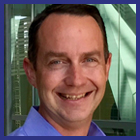
|
Trent Munro view bio | back to agenda
Executive Director of Process Development, Attribute Sciences, Amgen
Analytical Opportunities and Challenges in Developing CAR T-cell Therapies
CAR-T cell therapies are quickly emerging as an approach that has the potential to be a curative treatment for myriad oncology indications. As this immunotherapy advances in the industry, the analytical tools that exist to determine and track critical quality attributes (CQAs) must evolve alongside the treatment. Recent advances in the manufacturing processes have led to improved analytical methods that can measure and track CQAs with higher accuracy and reliability. The development of novel methods and the integration of innovative technology will enable accelerated delivery and higher quality therapies in the future. Amgen is positioning itself to be a leader in cell and gene therapy, and as part of this effort we will discuss the next generation of analytical approaches that need to evolve to supplement a better understanding of our products. |
 |

|
Nicole K. Paulk view bio | back to agenda
Assistant Professor, Department of Biochemistry & Biophysics, University of California, San Francisco; Visiting Scientist, Genome Engineering, Chan Zuckerberg Biohub
Challenges and Opportunities in AAV Manufacturing for Gene Therapy
Different manufacturing and purification approaches have been used in the production of recombinant AAV for gene therapy, namely baculovirus-infected insect and transiently-transfected human cell systems. Work from my lab has shown that each method produces vector lots exhibiting chemical and functional differences in vitro and in vivo. These differences have profound implications for vector lot integrity, trafficking, expression kinetics, stability, half-life regulation, and immunogenicity. Given these differences, we’re working actively to engineer novel solutions to overcome existing design and manufacturing challenges with scalable solutions and new quality control metrics. More broadly, we believe the five pillars of AAV platform development that need an engineering revolution are: 1) the genomic payload; 2) the capsid; 3) AAV production methods; 4) patient pre-treatment; 5) creative solutions for policy/regulation/insurance. Disruptive advancements in gene therapy and pricing will not come unless we address each of these five pillars. I will discuss our work and that of the broader field, as well as highlight opportunities for innovation that address key unresolved areas in the field of AAV gene therapy. |
 |

|
Casey Quinn view bio | back to agenda
Research Advisor, NEWDIGS FoCUS Project, MIT CBI
Coverage and Reimbursement for High-Cost Curative Therapies
The reimbursement of emerging durable/potentially curative cell and gene therapies is likely to be a challenge for the US healthcare market. Considering the pricing of cell- and gene-based therapies approved thus far, the acute cost of the numerous pipeline products likely to launch soon may be substantial for payers. This cost, in addition to the lack of long-term clinical durability data, could mean that payers will be reluctant to fund these types of therapies, which could have serious negative consequences for patients.
The value of these treatments accrues over a patient’s lifetime after a single administration event with an acute cost, which is counter to how most drugs are delivered and the norm of the US healthcare system of prescription ‘pay as you go’. The combination of high development costs for these drugs, the limited populations in the case of rare diseases and the single dose create an issue. With growing numbers of cell- and gene-based therapies expected to be approved, there is an urgent need for new financing and reimbursement models that can ensure appropriate patient access to needed treatments, remain affordable for payers, and sustain investment in innovation.
The Financing and Reimbursement of Cures in the US (FoCUS) project was launched by MIT’s NEWDIGS Initiative with the objective of further elucidating the challenges and financial impact created by durable/potentially curative therapies and providing implementable financial models to manage the cost burden on the US healthcare system.
Numerous healthcare stakeholders, including public and private payers, providers, patient advocates, clinicians, regulators, developers and financiers, are currently involved with FoCUS. The results of the process have been precision financing tools with unique properties that make them more or less appropriate for use in different situations. The tools and guidance on tool selection are being combined into a toolkit to support strategic decision-making for stakeholders.
Source: https://newdigs.mit.edu/sites/default/files/NEWDIGS%20FoCUS%20Frameworks%2020180823.pdf |
 |

|
Rajeev Ram view bio | back to agenda
Professor of Electrical Engineering and Computer Science, MIT
Technologies for High-Quality Manufacturing of Autologous Cell Therapies
High-quality production of cell therapies requires integration of sensor technologies with automated control over the cell micro-environment. Here, we discuss two technologies for realizing this level of sensing, control, and automation. The feed/dilution rate during cell expansion arises from the balance between over-dilution of paracrine factors which influence cell fate and functionality, while not allowing the accumulation of metabolic by-products, such as lactate or ammonia, which can impair cell growth. Today, the feed/dilution rates are scheduled based on prior experience. However, the consumption and production rates of nutrients and metabolites are highly variable, depending on the cell source. The advent of new tools that allow for monitoring cell proliferation and viability along with nutrient and metabolite concentration (for example by Raman spectroscopy) allow for the rates for feeding and dilution to be conditioned on real-time measurement. Perfusion microbioreactors are personalized cell culture systems capable of transducing and expanding single dose quantities of autologous cell therapies. They incorporate online monitoring and control over culture parameters such as pH, dissolved oxygen, and temperature. Currently, the feed composition and perfusion rate may be conditioned on these culture parameters, however the incorporation of online metabolite analysis will allow for direct closed loop control over the cell micro-environment. The compact size and closed system operation of perfusion microbioreactor systems enable efficient automation and integration with QC analysis instruments such as flow cytometers and digital PCR systems, where clusters of microbioreactors may share common automation and analysis resources. This offers the promise of in-process measurement of Critical Quality Attributes for high-quality, scaled-out manufacturing of autologous cell therapies. |
 |
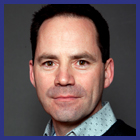
|
Rodney Rietze view bio | back to agenda
Director, Strategic Development and Innovation, Novartis Pharmaceuticals
Evolving the Manufacture of Cell-Based Therapies: Lessons Learned and Future Concepts
The clinical development and recent approval of two autologous cell-based therapies in 2017 clearly demonstrated the tremendous efficacy of these treatments for blood-based cancers. The commercialization and scaling of these innovative new medicines continue to be a significant challenge. As aptly described by the axiom “the process is the product”, cells are living entities that continue to respond to their environment in ways too often undetected (or unpredicted) by the operator. As such, and unlike the manufacture of small molecules, manual-handling bias is a significant and ongoing concern, as is preserving the safety, potency and identity of the drug product through the initial transfer of the manufacturing process, the multiple rounds of process improvements during clinical development, and finally during the global roll out that typically follows. Here I will present the insight and learnings that have been made by the team that developed and ultimately commercialized Kymriah™, the first FDA-approved cell-based gene therapy for pediatric acute lymphoblastic leukemia. |
 |

|
Mimi Roy view bio | back to agenda
Executive Director, Analytical Chemistry, BioMarin
AAV Gene Therapy Analytics: Measurement, Understanding and Control of Product and Process Related Impurities
This presentation will cover a variety of methods (RP-HPLC, Mass Spectrometry, Fluorescence Spectroscopy) for characterization of AAV particles. Quantitation of product-related and process-related impurities will be discussed in the context of the overall control strategy for AAV manufacturing. A method for determining site-specific deamidation will be discussed. Data will be presented correlating product-related impurities (deamidated and empty capsids) to in vitro potency. Analytics on full and empty capsids and processes that remove and control for deamidation will be shared in the development of a purification process pertaining to our gene therapy treatment (BMN 270) for Hemophilia A. |
 |

|
Gregory Russotti view bio | back to agenda
Vice President, Cell Therapy Technical Development, Celgene
Cell Therapy Manufacturing Platforms: How to Meet Today’s and Tomorrow’s Challenges
The reliability, reproducibility, speed, efficiency, flexibility, and cost of manufacturing are all critical to the clinical and commercial success of cell therapy products. This presentation will explore some of the facility design, staffing, and scheduling strategies being utilized to manufacture cell therapies in a cost-effective, reliable, and scalable manner. It will focus on both the current paradigm of labor-intensive processes with large numbers of manual manipulations, as well as some of the potential future states of cell therapy manufacturing, with a view on some of the new technologies that could be needed to satisfy these future states.
|
 |

|
Aletta Schnitzler view bio | back to agenda
Head of Collaborations, Cell Therapy Bioprocessing, MilliporeSigma
Expansion of Human Induced Pluripotent Stem Cells in Stirred Suspension Culture
The therapeutic potential of human induced pluripotent stem cells (hiPSCs) is under investigation for a variety of indications, ranging from acute myocardial infarction to diabetes. Yet typical static in vitro culture methods are often too cumbersome and inefficient to support commercial cell production. Stirred-tank bioreactor systems are a platform that can address scaling limitations of adherence-dependent cell types. Considerations for solid-liquid mixing will be discussed, including the application of Zwietering’s equation for suspension of solids to overcome scaling challenges often associated with microcarrier culture. Furthermore, the expansion of hiPSC as aggregates in stirred-tank bioreactors, while retaining markers of pluripotency and the ability to undergo directed differentiation to cardiomyocytes, will be explored. The results demonstrate the potential of hiPSC production in controlled systems that can support the production of large batches of cells for research and clinical applications.
|
 |

|
Elizabeth Schwarzbach view bio | back to agenda
Chief Business Officer, New York Stem Cell Foundation Research Institute
Beyond Automated iPSC Reprogramming: Applications for a Fully-Automated System
The NYSCF Global Stem Cell Array Team (K. Agwamba1, L. Bauer Vensand1, K. Brenner1, G. Buckley-Herd1, S. DesMarteau1, P. Fenton1, J. Goldberg1, C. Hunter1, T. Kroeker1, B. Johansson1, G. Lallos1, H. Martinez1, B. McCarthy1, P. McCoy1, D. Moroziewicz1, R. Otto1, K. Reggio1, B. Sun1, C. Terrenoire1, M. Zimmer1), Rick Monsma1, Scott A. Noggle1, Daniel Paull1
1New York Stem Cell Foundation Research Institute, New York, New York
The use of pluripotent stem cells is dramatically altering the R&D landscape, providing new insights into basic biology of disease progression and novel cell types for pharmaceutical drug screening. Additionally, pluripotent stem cells are already in clinical use for a number of disease indications. However, one limitation of the work to date is that in vitro studies have largely focused on highly-penetrant point mutations known to directly lead to a disease phenotype. While useful, this approach may not always be applicable to idiopathic versions of the same disease. For the majority of diseases, underwritten by common causal variants, modeling using only a limited number of cell lines is insufficient.
To overcome these issues, we have developed a fully automated platform which allows high-throughput cell biology to be accomplished: from reprogramming of hundreds of cell lines in parallel to high-throughput differentiations, large-scale experiments can now be performed to interrogate these diseases. Here we report on progress in adapting the NYSCF Global Stem Cell Array technology to encompass high-throughput genome editing as well as large-scale differentiations and screens. We will present a number of case studies highlighting the continued development of this automated system for stem cell biology.
|
 |
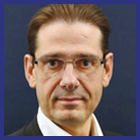
|
David Sourdive view bio | back to agenda
Executive Vice President, Technical Operations, Cellectis
Universal Gene-Edited CAR T-Cell Immunotherapy: A Future-Defining Shift in Availability and Cost Effectiveness
Abstract to follow.
|
 |

|
Krystyn Van Vliet view bio | back to agenda
Associate Provost; Michael and Sonja Koerner Professor of Materials Science and Engineering and Professor of Biological Engineering, MIT
Critical Attributes of Stem Cells for Therapeutic Efficacy: Engineering and Understanding Manufacturing Implications
Stem and progenitor cells have been studied intensely as regenerative and curative therapies, but with mixed success in translation and clinical trial progression and regulatory approval. We will consider the example of mesenchymal stromal cells (MSCs), a subset of which are considered multipotent stem cells that could offer tissue regeneration in vivo via differentiation or via paracrine signaling – depending on the target indication that has ranged from cartilage repair to cardiac ischemia to autoimmune diseases. One key challenge in translational and regulatory science, as well as in manufacturing practices required of positive clinical outcomes, is the emergent functional heterogeneity of MSCs to include non-stem cells during the in vitro expansion required for most autologous and allogeneic therapies under consideration. Here we demonstrate new findings that build on our previous demonstrations that subpopulations of MSCs can be identified and sorted to achieve significantly increased therapeutic efficacy that stems from MSC paracrine signaling. Specifically, we show the MSC populations can be mechanoprimed in vitro to affect the MSC secretome and thereby predictably enhance complex in vivo processes such as hematopoiesis. These advancements in efficient cell therapy product generation via engineering of the culture environment are complemented by our dual focus on data analytics to understand the correlations and causes of such cell population heterogeneity. Indeed, we find through advanced imaging analysis and gene expression analysis that even single-cell derived MSC colonies are not phenotypic clones under typical in vitro culture expansion environments, and discuss how such fundamental understanding can provide new, critical quality attributes that guide stem cell production for improved clinical trial designs and therapies.
|
 |

|
J. Fraser Wright view bio | back to agenda
Chief Technology Officer, Gene Therapies, Axovant Sciences
In Vivo rLenti-Based Gene Transfer for Parkinson’s Disease: Endogenous Dopamine Production by Three-Gene Transfer Using AXO-Lenti-PD
Restoration of endogenous production of dopamine in targeted regions of the brain is a promising strategy in the development of a gene transfer approach for Parkinson’s Disease. This presentation will describe in vivo intra-putaminal administration of a recombinant lentivirus investigational product containing an expression cassette encoding three proteins designed to generate dopamine from endogenous substrate L-tyrosine. Objectives for vector manufacturing and characterization to support ongoing clinical development and prospective scale-up will be included. |
 |
|
|
|